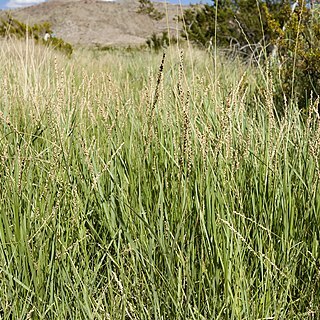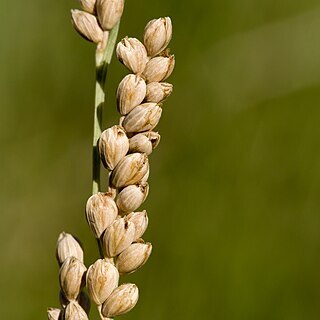Slender, erect, 3–7 dm; basal stolons vine-like, to 2 m; lf-blades 1–2 dm × 3–6 mm; panicle slender, 5–15 cm, bearing several erect secund racemes 1–3 cm; spikelets ellipsoid to obovoid, 2.5–4 mm, brownish, obtuse; first glume three-fourths to nearly as long as the spikelet; second glume and sterile lemma subequal, obtuse or rounded, strongly veined; 2n=20, 36, 40. Moist soil; Utah to Kans., nw. Mo. (where probably only intr.) and Ark., s. to Mex.
A perennial grass which grows up to 75 cm high. The plant can produce stolons more than 2 metres long and so can spread considerably.


